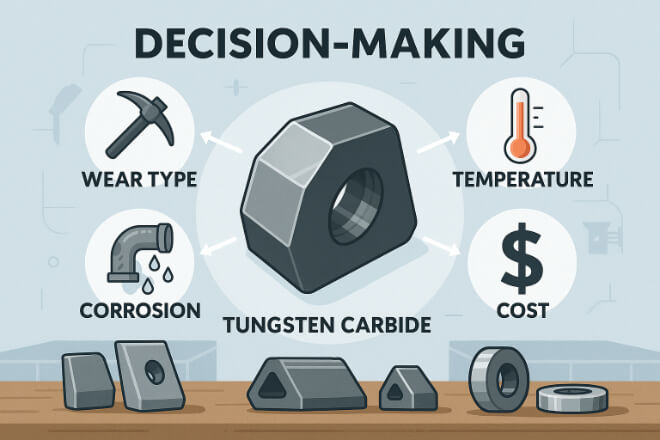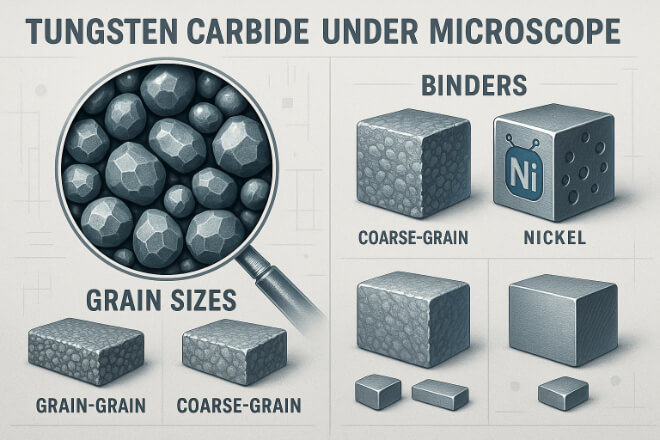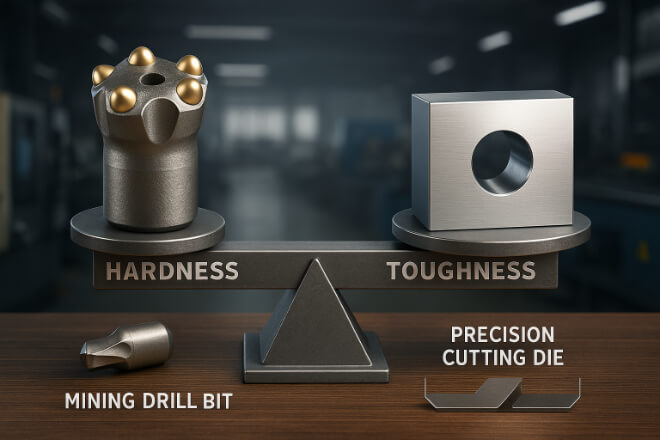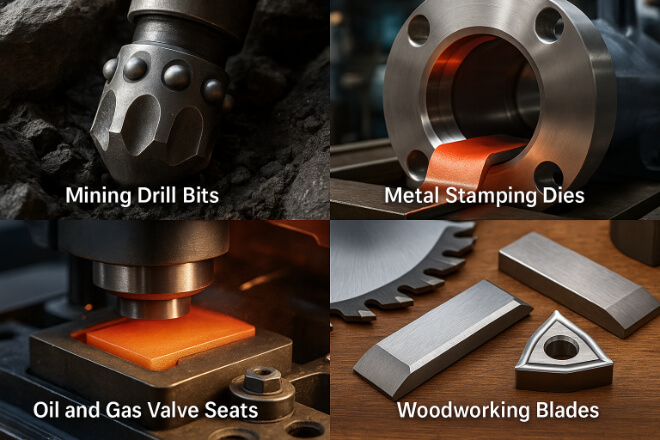タングステンカーバイド摩耗部品 工具が激しい摩耗、熱、衝撃にさらされる産業で使用されています。しかし、すべてのタングステンカーバイドが同じというわけではありません。
異なる材種は、異なる作業条件に対応するために作られています。不適切な材種を選択すると、早期の故障、コストの増加、ダウンタイムにつながる可能性があります。適切な材種を選択することで、工具寿命と性能を最大限に高めることができます。
このガイドでは、グレードの意味、グレードの違い、アプリケーションに適したグレードを選択する方法について説明します。
目標は、特に製造業の意思決定者にとって、このプロセスをシンプルかつ明確にすることです。 採掘, 石油・ガス、金属成形、その他の重工業。
一般的な炭化タングステングレードとその用途
| グレードタイプ | 主なプロパティ | 最適な用途 |
|---|---|---|
| 微粒子炭化物 | 高硬度、優れた耐摩耗性 | 精密切削工具、金型、耐摩耗ノズル |
| 粗粒炭化物 | 高い靭性、耐衝撃性 | 採掘工具、掘削ビット、高耐久摩耗部品 |
| サブミクロンカーバイド | 極めて高い硬度、滑らかな仕上がり | 医療用具、微細加工、精密部品 |
| ニッケル結合炭化物 | 耐腐食性 | 石油・ガスバルブ、化学ポンプ、海洋用途 |
グレードを選ぶ際に考慮すべき要素

タングステンカーバイドのグレードを選択する際、意思決定者は以下の点に留意する必要があります。
摩耗の種類 – 研磨摩耗、衝撃摩耗、あるいはその混合ですか?
動作温度 – 一部のバインダーは高温でより優れた性能を発揮します。
腐食のリスク - 部品が化学薬品や湿気の多い環境にある場合は、ニッケル結合グレードが役立ちます。
コストとパフォーマンス – グレードが高いほどコストは高くなりますが、耐用年数ははるかに長くなります。
意思決定者のためのヒント

特定の仕事のためにサンプルをテストできるサプライヤーと協力します。
既存のツールの摩耗パターンを追跡して、最初に何が故障するかを把握します。
過剰な指定は避けてください。より高価なグレードを指定しても、必ずしもパフォーマンスが向上するとは限りません。
結論
適切なタングステンカーバイドグレードを選択するには、硬度、靭性、環境要件のバランスを考慮する必要があります。
グレードの仕組みを理解することで、意思決定者は工具寿命を延ばし、ダウンタイムを削減し、効率を向上させることができます。適切な選択はコスト削減と長期的な信頼性の向上につながります。
企業の詳細を知りたい場合は、お気軽にお問い合わせください。 お問い合わせ。



